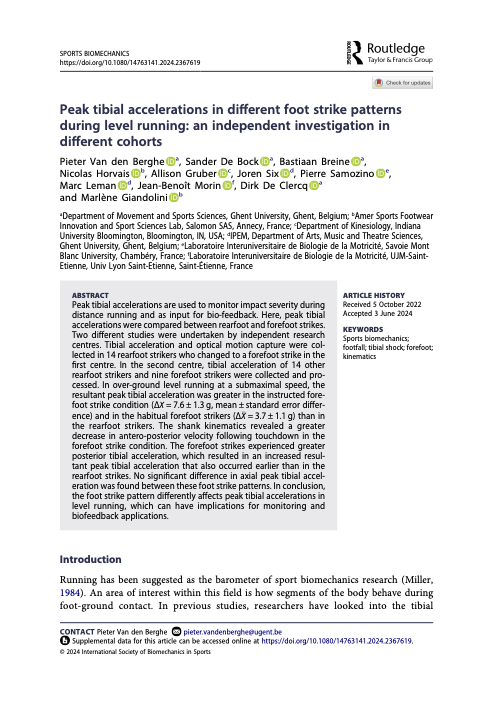~ Validity and reliability of peak tibial accelerations as real-time measure of impact loading during over-ground rearfoot running at different speeds
» By Joren on Tuesday 01 October 2024
The publication of this paper seemed an almost sisyphean task, but it is now finally in print after about four years since first submission. All’s well that ends well and it is well indeed: the paper contributes a fundamental insight around the resultant peak tibial acceleration (PTA) in forefoot running: contrary to what is often presumed, the resultant PTA is higher in forefoot running! The paper combines two separate experiments into a single analysis framework which ensures robustness in the finding. The conclusions of the article can be found below:
Conclusions Many coaches and practitioners presume that forefoot striking decreases impact severity and prevents overuse injuries; however, our data show that instructed and habitual forefoot strikes have greater resultant but not axial PTA than habitual rearfoot strikes in level running at a submaximal speed. The forefoot strikes had a sharp decrease in the antero-posterior velocity of the shank following touchdown and, therefore, a greater antero-posterior acceleration, which resulted in the greater resultant peak tibial acceleration compared to the rearfoot strikes. Conclusively, the foot strike pattern differently affected PTAs and should be taken into account when evaluating 3D impact severity in distance runners.
My contribution to the paper was limited to technical development and support during the measurements at Ghent University. For the full paper, please read the publishers version of Validity and reliability of peak tibial accelerations as real-time measure of impact loading during over-ground rearfoot running at different speeds.
